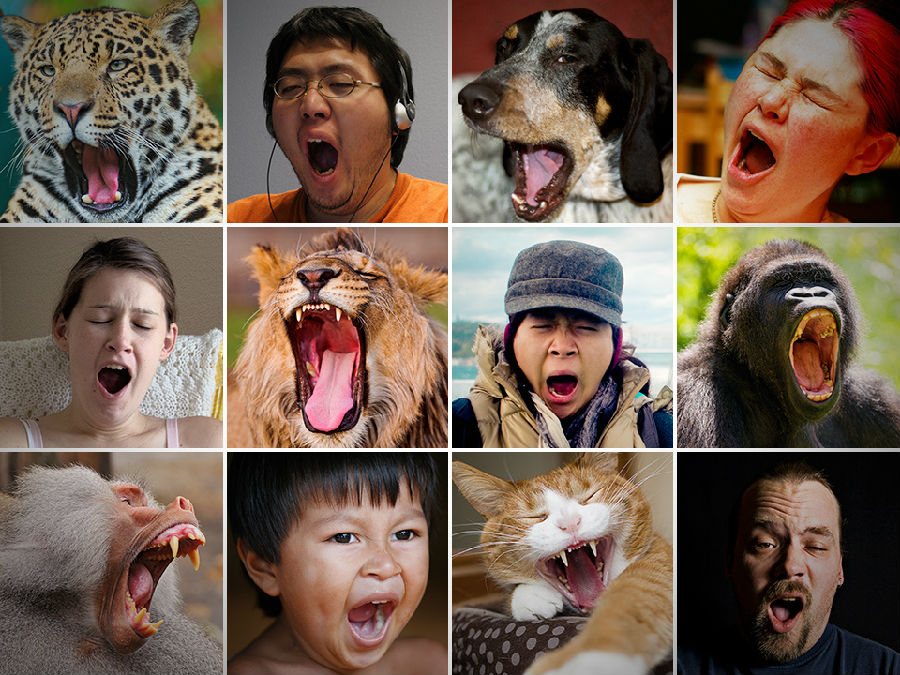Empathy is the ability to understand what someone else is feeling and partake in their emotion, a crucial ability for social animals like us.
共感是一種理解能力,它使我們體會他人的感受并融入對方的情感,這是一種對于像人類這樣的社會性動物來講十分關鍵的能力。
Recently, neuroscientists have found that a subset of mirror neurons allows us to empathize with others' feelings at a deeper level.
最近,神經學家發現鏡像神經元的一組子集使我們能夠進一步增進對他人感受的認知。
(Yawn) Scientists discovered this empathetic response to yawning while testing the first hypothesis we mentioned, fixed action pattern.
科學家們對于這種共感性哈欠的發現源自于對先前提及的第一種假說的驗證中,也就是固定行為模式。
This study was set up to show that dogs would enact a yawn reflex at the mere sound of a human yawn.
這項研究是為了證明狗打哈欠的條件反射能夠僅通過人類所發出的哈欠聲來實現。

While their study showed this to be true, they found something else interesting.
此項研究不僅證明了這一事實,科學家們還發現了另一個有趣的現象。
Dogs yawned more frequently at familiar yawns, such as from their owners, than at unfamiliar yawns from strangers.
熟悉的哈欠對狗的影響更為頻繁,比如主人的哈欠,而陌生的哈欠則不那樣明顯。
Following this research, other studies on humans and primates have also shown that contagious yawning occurs more frequently among friends than strangers.
隨著進一步的探索,其他對于人類及靈長類動物的研究也證實了哈欠的傳染性多發生在朋友而非陌生人之間。
In fact, contagious yawning starts occurring when we are about four or five years old, at the point when children develop the ability to identify others' emotions properly.
事實上,傳染性哈欠在我們4、5歲時就已經產生了,因為那時的孩子已經能夠正確地識別他人的情感。
Still, while newer scientific studies aim to prove that contagious yawning is based on this capacity for empathy, more research is needed to shed light on what exactly is going on.
盡管最新的科學研究致力于證明傳染性哈欠是基于共感能力,但更多的研究仍在等著我們。去解釋這其中真正的原因。
It's possible that the answer lies in another hypothesis altogether.
真正的答案或許就在另一個假說中。
The next time you get caught in a yawn, take a second to think about what just happened.
下次你再打哈欠時,停下來想想剛才都發生了什么。
Were you thinking about a yawn?
你是在想打哈欠這件事嗎?
Did someone near you yawn?
附近有其他人打哈欠嗎?
Was that person a stranger or someone close?
那個人是陌生人還是熟人?
And are you yawning right now?
還有你現在在打哈欠嗎?











